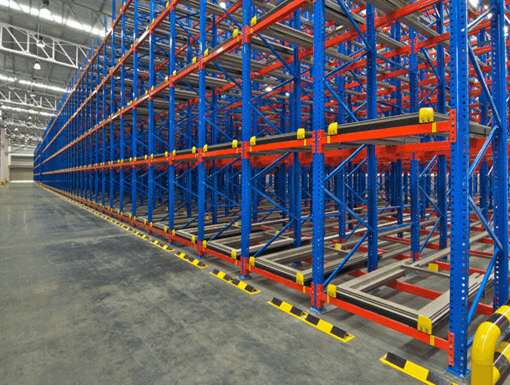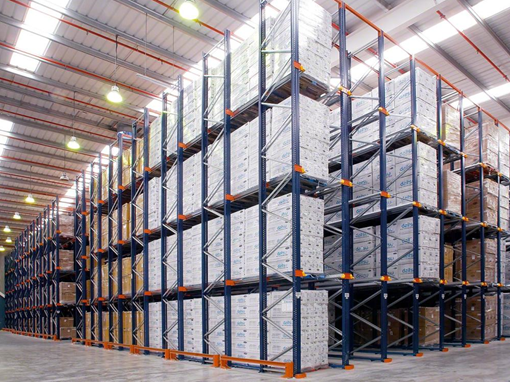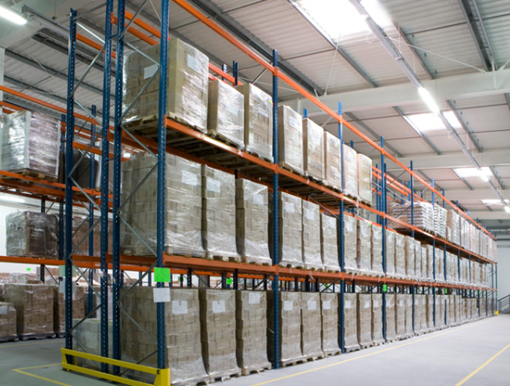In today’s warehouses and distribution centers, space is at a premium. That’s why it’s important to make the most of every square foot – and that includes using vertical space more efficiently.
One way to do this is with a push-back rack system, a type of live storage system that allows you to store more pallets in the same amount of space.
Push-back racking is also designed for first-in, first-out (FIFO) inventory management, which means that you can keep your inventory fresh and reduce the risk of stockouts.
In this blog post, we’ll take a closer look at push-back rack and how it can help you make the most of your warehouse space.
What is Push-Back Racking?
Push-back racking is a storage method that allows pallets to be stored from 2 to 6 deep on either side of an aisle, giving you higher storage density than conventional forms of racking.
With push-back pallet racking, you can combine the density of drive-in rack while also providing single-lane selectivity.
Wheeled carts sit stacked at the pick aisle of each lane. A pallet is placed on the top cart, then to load the next pallet, the forklift pushes it back, exposing a cart underneath.
The process continues until all carts are used, with the last pallet resting on the rails. As pallets are extracted, the rear pallets automatically flow forward, producing a highly effective process.
Types of Push-Back Racking
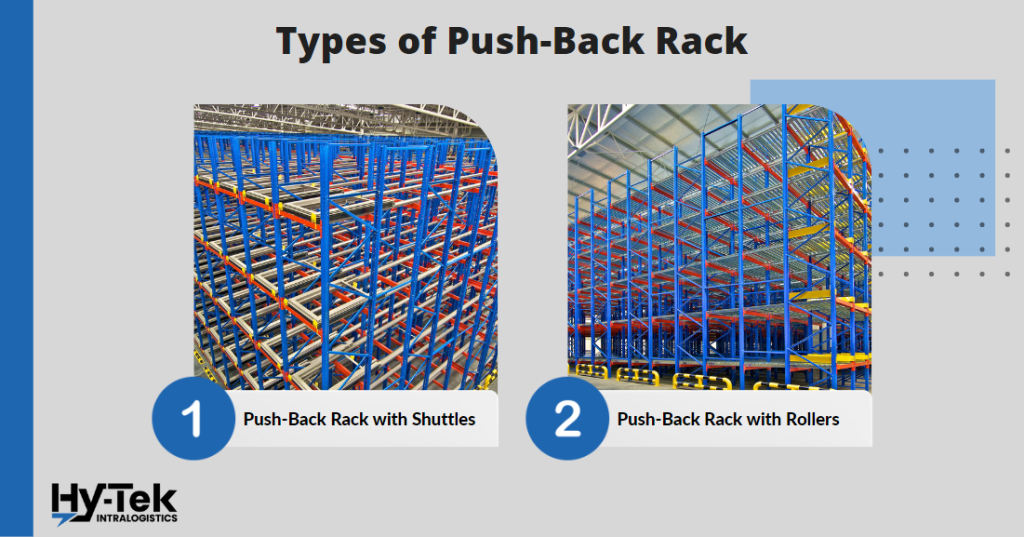
There are two types of push-back racking: push-back with carts (sometimes call shuttles) and push-back with rollers.
- Push-back with shuttles, each pallet is deposited on a shuttle that moves on rails.
- Push-back with rollers uses beds fixed to the structure with a slight incline.
Both types offer an efficient way to store and manage inventory in your warehouse or distribution center.
How Push-Back Rack Works
The pushback rack system contains a series of carts that ride on inclined rails.
Forklifts can load pallets onto the top cart, and as additional pallets are brought in, the first pallet is pushed back and the new pallet is set on top. This continues until the last pallet is loaded. When it’s time to unload, the process is reversed and the pallets are pushed back to the front of the lane for easy removal.
Push-back racks offer an efficient storage solution for companies with high volume inventory turnover.
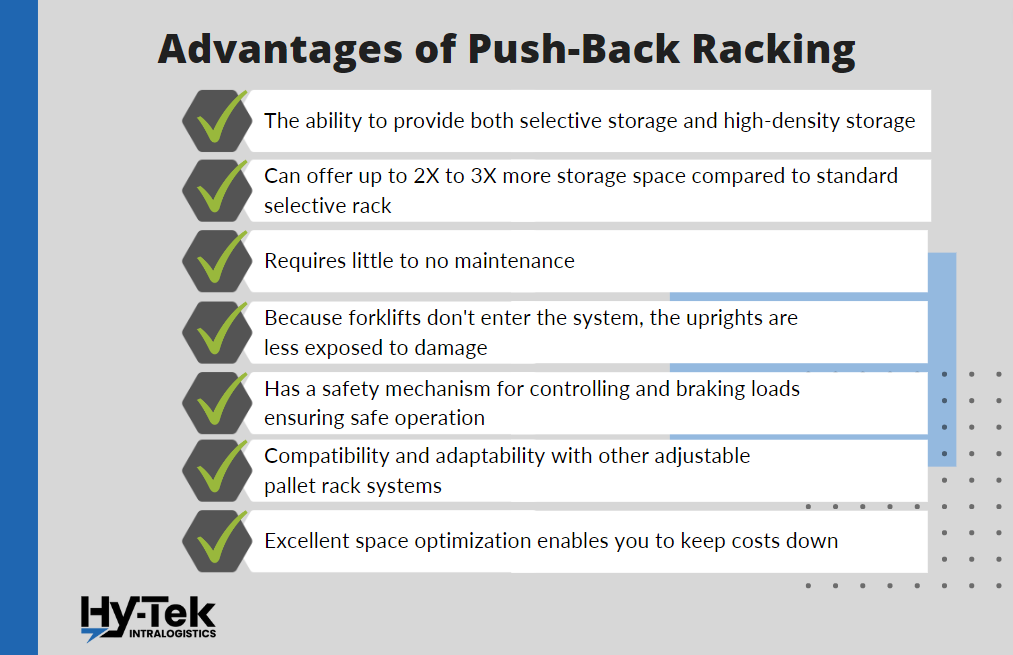
Advantages of Push-Back Racking
The most important features of push-back systems are their ability to optimize the space available and the rapid loading and unloading of materials.
- The ability to provide both selective storage and high-density storage
- Can offer up to 2x to 3x more storage space compared to standard selective rack
- Push-back rack requires little to no maintenance
- Because forklifts don’t enter the system, the uprights are less exposed to damage
- The LIFO push-back racking structure has a safety mechanism for controlling and braking loads that reduces the risks in both the shuttle and roller systems, ensuring safe operation
- Compatibility and adaptability with other adjustable pallet rack systems due to the high compaction and resistance of roller and shuttle systems at low temperatures, it’s an excellent choice for cold storage or freezing
- Excellent space optimization enables you to keep costs down
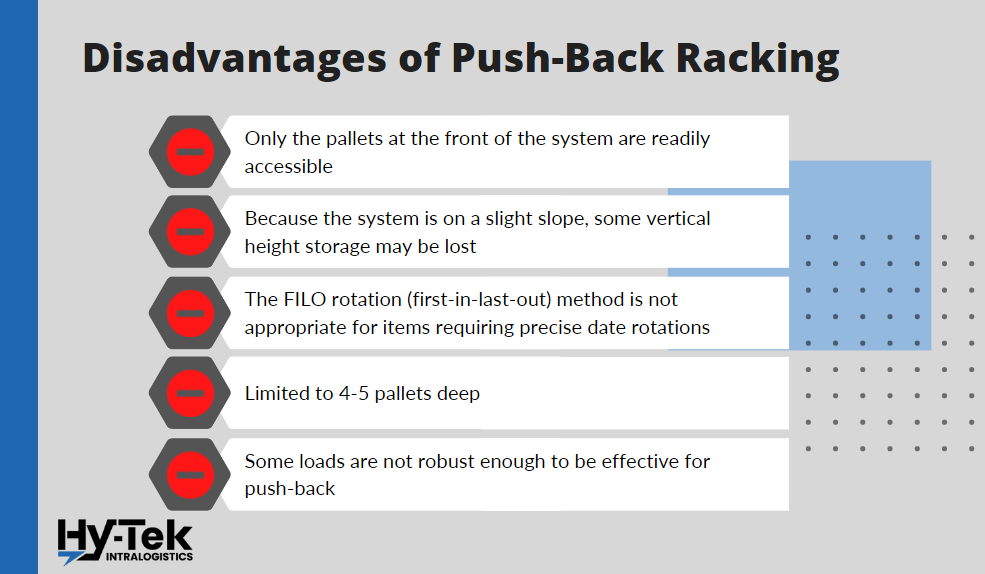
Disadvantages of Push-Back Racking
- Only the pallets at the front of the system are readily accessible
- Because the system is on a slight slope, some vertical height storage may be lost
- The FILO rotation (first-in-last-out) method is not appropriate for items requiring precise date rotations
- Limited to 4-5 pallets deep
- The load is the mechanism that pushes the other loads in the system, so the integrity of the load is a critical consideration. Some loads are not robust enough to be effective for push-back.
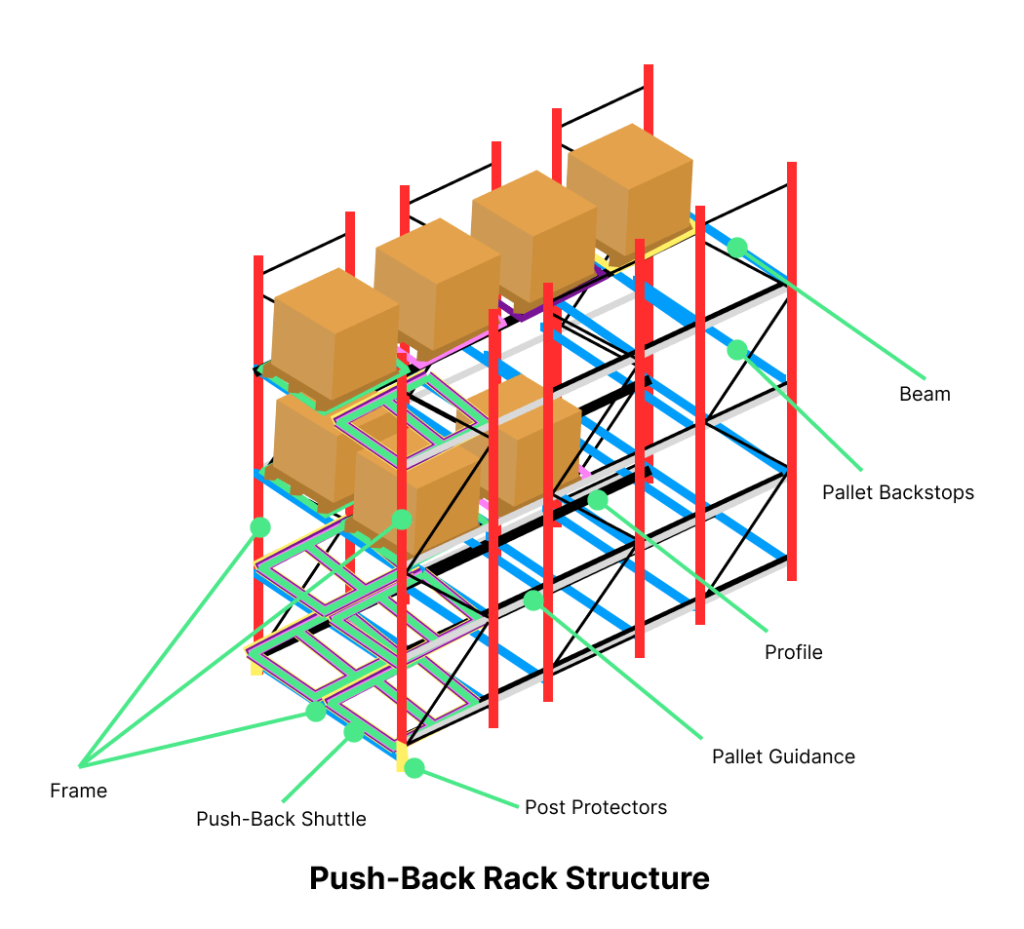
Push Back Racking System Structure
Push-Back Racking Systems consist of a base metal structure with frames, beams, crossbeams, and dynamic profiles. The system includes shuttles or rollers which generate the live system and movement inside the structure. These elements also include safety accessories for braking and controlling the unit loads. Let’s dig into each component below.
Frame
The frame consists of two upright posts, their diagonals, baseplates, and floor fixing elements. The frame is made of steel that is typically painted but can be galvanized to resist rust and corrosion, particularly beneficial in freezers. The frame is designed with punching that allows for beam height to be adjustable, so it can be customized to fit your needs. In some cases, individual posts may be used in concert with uprights.
Beams
Beams are what hold the racking together laterally and keep the load supported. They support the load and the shuttles that allow for pallets to move. The beams fit into punched holes in the uprights and are held in place by connectors.
Post Protectors
These are optional devices that protect the racking from potential forklift impacts. They work by absorbing the force of the impact and dissipating it throughout the protector. This keeps the racking safe and secure, preventing damage that could occur if a forklift were to collide with it.
Profile
The profile is a metal component that is anchored to the beams of each of the level ends. It supports the shuttles or rollers that move the racking.
Pallet Guidance
Pallet guidance can be positioned in front of each level and sits on either side of the lane. The main objective of pallet guidance is to assist operators when depositing loads and to keep them from straying off track. It also serves as a safeguard against potential collisions with the shuttle or roller system.
Pallet Backstops
Pallet backstops are effective for keeping pallets in check and in the correct position. They are located at the back of the lane to prevent pallets and their loads from getting pushed off the back of the system.
Push-Back Roller System
The roller system uses rollers instead of carts. The rollers are typically made of steel and extend the depth of the level. Like the cart system, the slope of the rails and rollers allows gravity to bring the load forward, while the loads are used to push the loaded pallet back.
Push-Back Shuttle System
Push-back shuttle systems use rails and shuttles to transport pallets. Rails are fixed to beams with a slight incline to help shuttle movement. Shutters are connected to rails and adjustable in size/number depending on load size and lane depth.
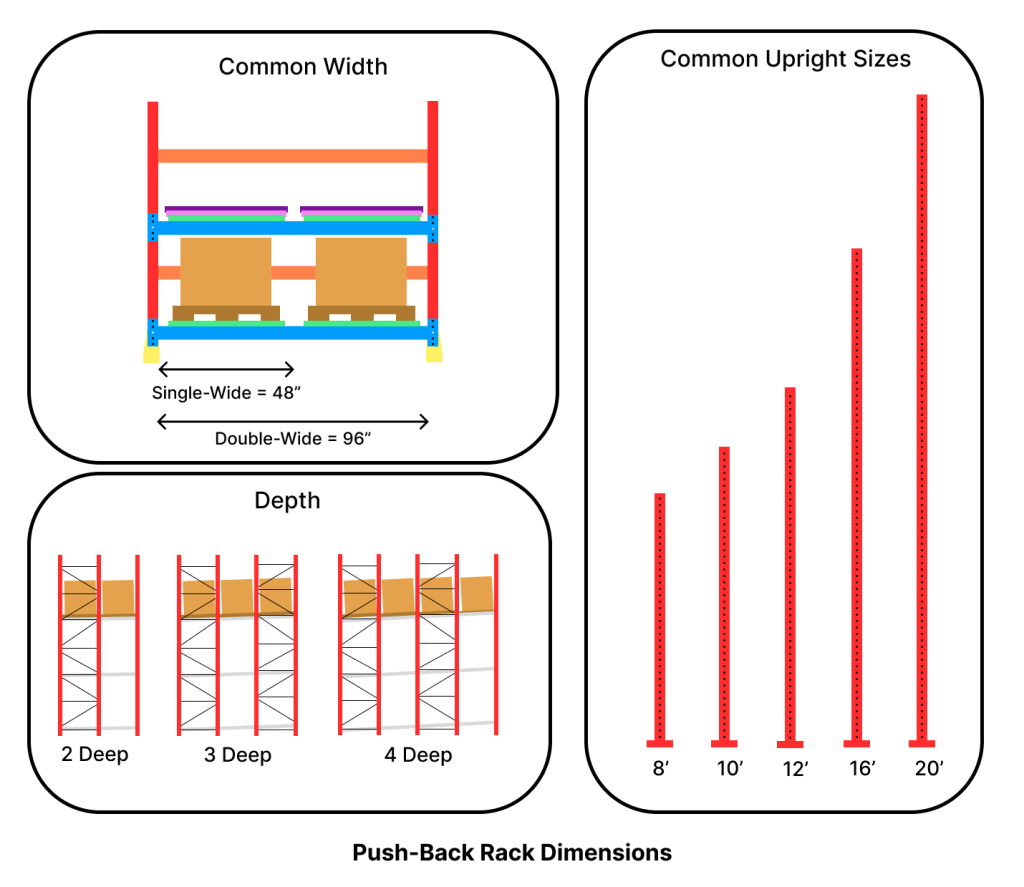
Push Back Racking System Dimensions
The dimensions of storage systems vary depending on the depth of pallets. However, the typical system that uses conventional GMA pallet sizes will be 8′ to 28′ deep with either a 96″ double-wide bay or in some rare cases, a 48″ single-wide bay. The height of your storage system will be limited by facility height, upright strength and forklift reach, but a typical system will be 16′ or 20′ tall.
How to Tell if Push-Back Racking Right for you
A push-back rack system might be right for you if:
- Your application requires very little to no order picking
- You have multiple-product storage situations and need to combine the push-back system with other storage solutions, such as static, drive-in or pallet flow racks
- Items are non-perishable and have a long shelf life
- The number of pallets per SKU ranges from 6 to 30
FAQ
How much does push-back racking cost?
A pallet rack is a LIFO system using a heavy-duty cart where the loads are stored. A push-back system ranges from $150 to $400 per pallet location, based on the number of pallet positions.

